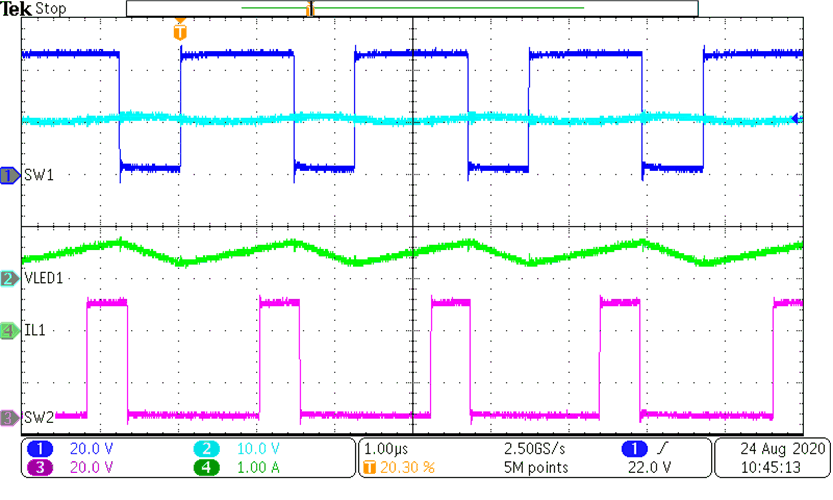SLUUCC4A October 2020 – September 2021 TPS92520-Q1
- Trademarks
- General Texas Instruments High Voltage Evaluation (TI HV EMV) User Safety Guidelines
- 1Description
- 2Performance Specifications
- 3Performance Data and Typical Characteristic Curves
- 4Schematic, PCB Layout, and Bill of Materials
- 5Software
- 6TPS92520EVM-133 Power Up and Operation
- 7Revision History
3.1 1.5A CC BUCK SW-Node Voltage Waveform
Figure 3-1 shows the switch node voltage waveforms of the channel 1 and channel 2 of the TPS92520EVM-133 dual channel BUCK LED driver. The switch node (SW1 and SW2) of the two channels that are completely independent of each other. SW1 and SW2 are not in phase and are not 180 degrees out of phase. The switching frequency, input voltage, and out LED current setpoints can also be set independently on each channel.

VIN = 48 V, VLED1 = 30 V, VLED2 = 10 V
Figure 3-2 Dual-Channel Buck SW-Node Voltage